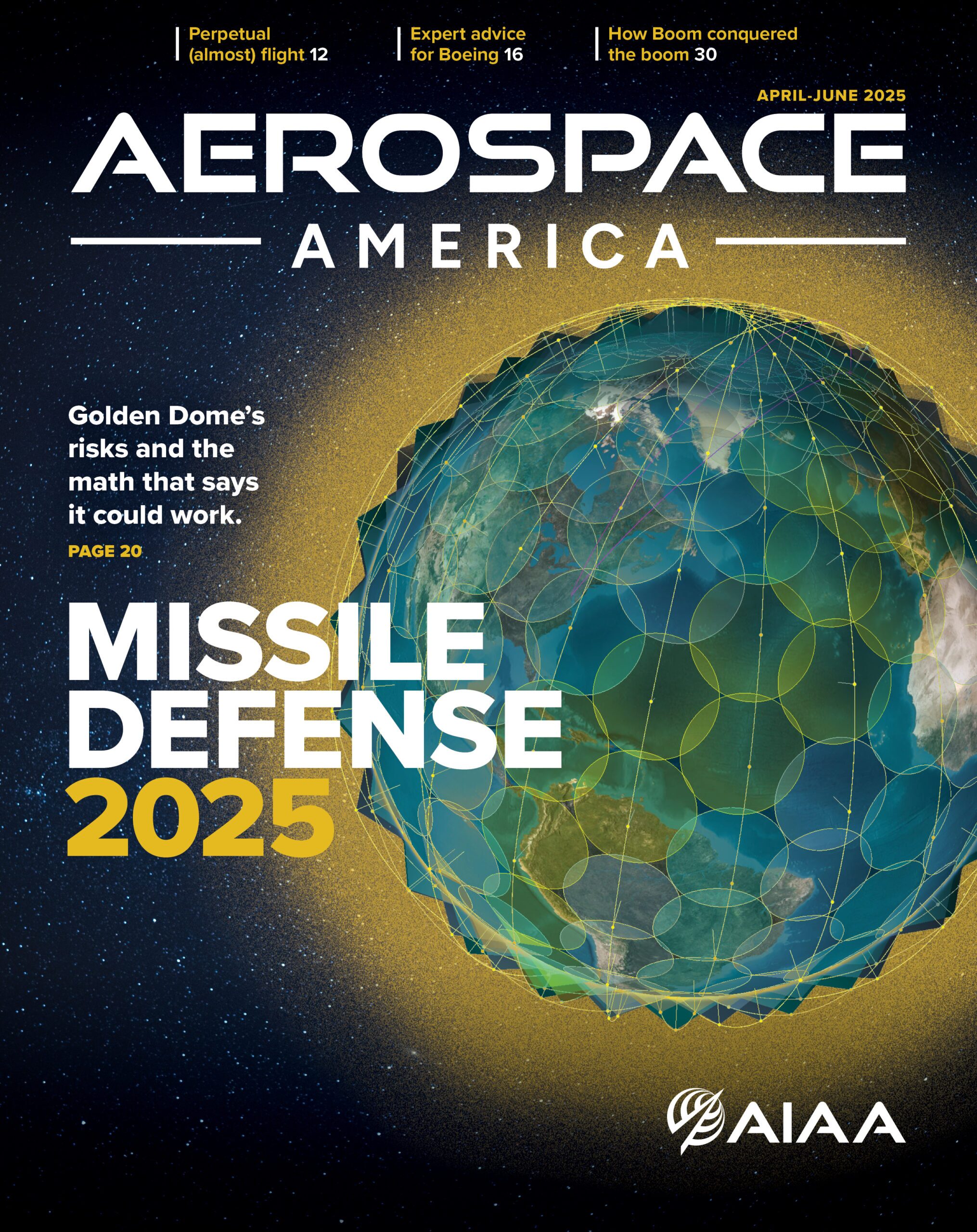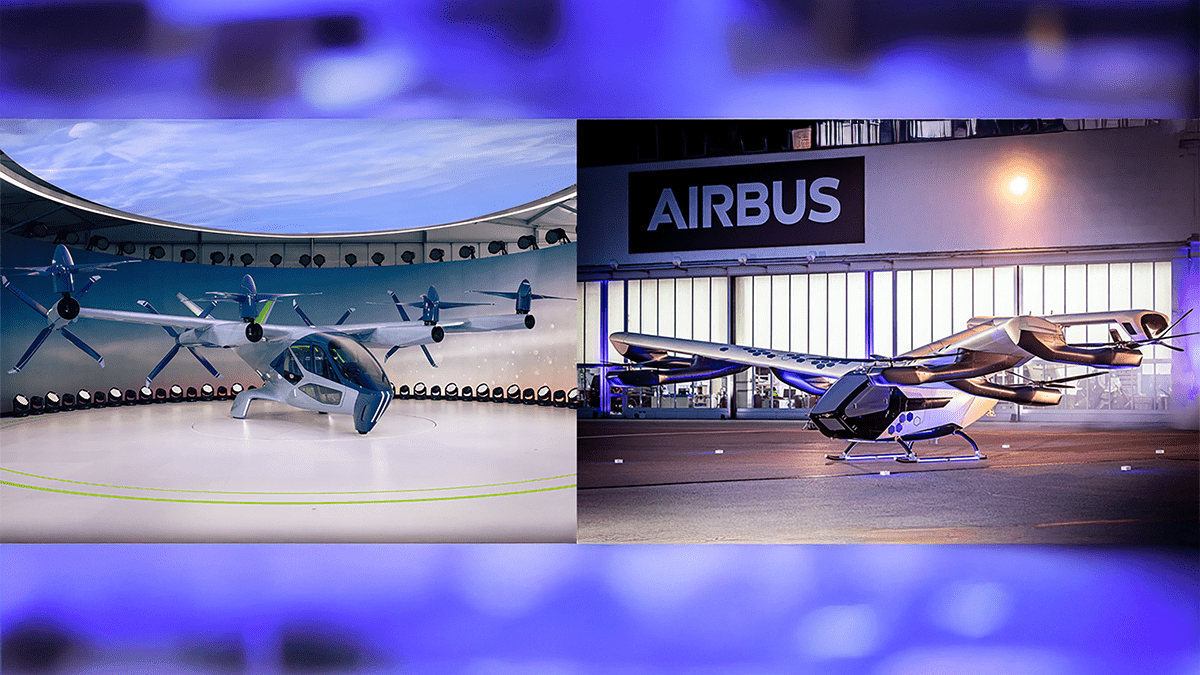Stay Up to Date
Submit your email address to receive the latest industry and Aerospace America news.
Models of Supernal’s AS-2 (left) and Airbus’ CityAirbus NextGen air taxi concepts. Credit: Supernal/Airbus
Two of the biggest corporate players developing electric air taxis have paused their projects in recent months — but both have indicated that they expect to eventually resume work.
How exactly that happens is the subject of much debate and attention in the advanced air mobility industry.
In January, Airbus Helicopters CEO Bruno Even said the company would halt work on the CityAirbus NextGen electric vertical takeoff and landing aircraft. Hyundai subsidiary Supernal followed suit in late August, announcing that CEO Jaiwon Shin and Chief Technology Officer David McBride were stepping down while the company shifts from early development to “business and operational development.” In an email, Supernal said it was taking that transition as an opportunity to “review progress and next steps.”
For more about advanced air mobility, receive the True Mobility newsletter in your inbox.
The pauses illustrate that a deep-pocketed corporate backer is no guarantee of any particular success in the nascent advanced air mobility industry. But analyst Sergio Cecutta cautioned against drawing much of a parallel between the two.
“Airbus has an existing helicopter business where investment can result in short-term returns as opposed to an unproven market,” said Cecutta, managing partner at Arizona-based SMG Consulting, which maintains the AAM Reality Index of companies developing electric air taxis based on progress toward commercial service. “It is a different story for Supernal. Supernal will be back after the pause. What we don’t know is how long it will take to get going again.”
Both companies had displayed mockups at trade shows and flown full-scale prototypes, but Supernal’s most recent prototype never flew without a tether. Cecutta said Supernal appeared to have raised expectations too high with its marketing of the S-A2 aircraft.
“Their presence at trade shows was maybe a little too much too soon,” he said, contending the company failed to identify what specific niche it was targeting and how its design was unique compared to the dozens of air taxis in development around the globe.
Supernal declined requests for an interview, but said in an email, “As we transition to new leadership, we have taken the opportunity to strategically review our program’s progress and next steps to ensure alignment with our long-term goals.”
The company said it “remains strongly committed to its AAM [advanced air mobility] business.”
Airbus has said it will preserve the know-how gained from developing its CityAirbus electric aircraft while waiting for battery technology and regulations to evolve.
“We believe the role we can play in the Urban Air Mobility market fits perfectly with our purpose,” Airbus told me by email, but the “conditions to launch a new programme are not there yet.”
Austin Moeller, an analyst and director of equity research at Vancouver-based financial services company Canaccord Genuity, noted that Airbus could perhaps enter the AAM market by another avenue, if it chooses not to pursue its own design.
“It would not surprise me if Airbus ultimately just acquires one of the successful eVTOL companies at this point, once one of them has a certified aircraft,” Moeller said by email.
For Dan Sloat, founder and president of the Boston nonprofit Advanced Air Mobility Institute, the news didn’t come as a shock.
“Hyundai has always been clear that they were not vying to be first to market, but rather a strategic follower once the type certification [regulatory] pathway was more clear and predictable,” Sloat said in an email, referring the company’s goal of beginning passenger service no sooner than 2028.
He added: “And, to keep pace with Boeing, I can absolutely see Airbus swooping in to acquire a startup that can compete with [Boeing subsidiary] Wisk Aero.”
About paul brinkmann
Paul covers advanced air mobility, space launches and more for our website and the quarterly magazine. Paul joined us in 2022 and is based near Kennedy Space Center in Florida. He previously covered aerospace for United Press International and the Orlando Sentinel.
Related Posts
Stay Up to Date
Submit your email address to receive the latest industry and Aerospace America news.




